An annual research expedition on monitoring of the spawning grounds of the Atlantic salmon population in the Mezen has come to an end. The expedition was organized by Silver Taiga Foundation under Model River Mezen Project.
During a week the upper reaches of the Mezen and the tributaries Upper and Lower Puzla, Elva Mezenskaya and Pyssawere examined. The counting of the salmon redds number was conducted according to the integrated practice. Such redds help to keep a record of the spawned-out representatives of the Atlantic salmon.
Besides Silver Taiga specialists the representatives of the partners took part in the expedition, they are: Udora branch of Komirubvod State Budgetary Institution, SPNA Republican Center, Udora Department of the State Control and Protection of Water Bioresources, indigenous community «Udorachi». The participants of the expedition divided into three groups and they covered not less than 200 km along Mezen River and its upper tributaries holding fixed the spawning redds and their positioning data as well as the number of the noticed grown-up and young representatives of the Atlantic salmon.
According to the participants of the expedition, the situation on the inspected parts of the spawning tributaries is different. There were, for example, many spawing redds in the upper reaches of Mezen River and on the Upper Puzla River and at the same time only one redd was noticed on Pyssa River. The marks of illegal fishing was also not noticed on Pyssa River. As the ichthyologists say, the salmon population is already destroyed here and that is why there is nothing to fish. But we should consider the fact that the water in Pyssa river is warmer in comparison with Mezen River and for this reason the spawning is possible here but at a later time.
Overall, the participants of the expedition have noticed an aggressive fishing pressing almost on all the inspected rivers. The bigger one is on the Lower Puzla River, which is available from the Mezen River and from the road bridge. The marks of the illegal fishing – a score of stone and wooden fences, fishing nets, campfire sites with the illegal fishing equipment left nearby. As an example, there was an incident happened during the first day of the expedition. Two boats with people were noticed on the Lower Puzla River, which were moving up the river. The state inspector asked them to stop but they continued to move. Later on the illegal fishing equipment such as fences and fishing nets with dead young salmon and grayling was noticed downstream the river. The similar situation was observed all along the inspected part of the Lower Puzla River.
There were the state inspectors among the participants of two groups and that is why it was possible to combine the monitoring of the spawning grounds and the supervisory control. As a result of this, two reports on administrative violation have been written.
Breeding grounds at these areas have been monitored for six years in a row. Is it possible to see any changes or track the trends related to the Mezen salmon?
“There are some trends to be noted”, Nikolay Shilov, the Mezen Model River project coordinator and leader of the expedition, believes. “The years of ongoing monitoring have demonstrated increased number of redds which depends on a multitude of factors, including weather conditions. However, it is clear that redd occupancy is extremely low. Written sources and old-time residents tell us that before the 1950s salmon rising for spawning were so numerous that they often swept away each other’s nests and redds to find some spawning space. Comparison with other rivers with salmon spawning there highlights low level of occupancy at breeding grounds as well. Meanwhile, breeding grounds in the Mezen and its tributaries in Udora district are in good condition, so their potential is underutilized. The results of our six-year monitoring research will be soon reviewed and discussed with experts, and it is most likely that we will be able to draw some conclusions. Monitoring of the condition and occupancy of breeding grounds is one of the techniques to assess the population dynamics. So, such conclusions will be relevant to justify the activities under the interregional Mezen salmon preservation program initiated and currently implemented by us”.
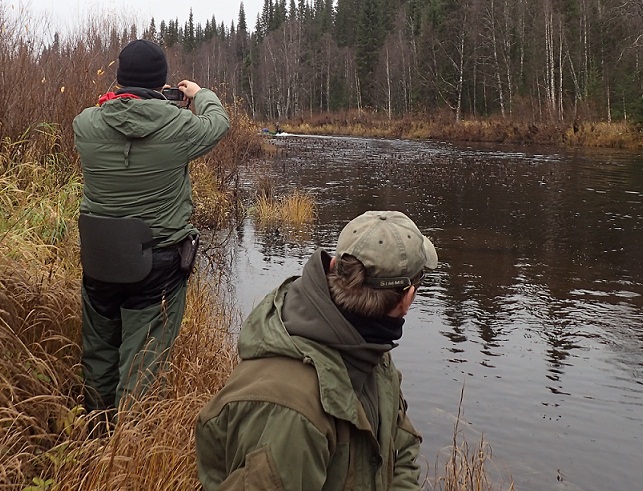
The Lower Puzla River
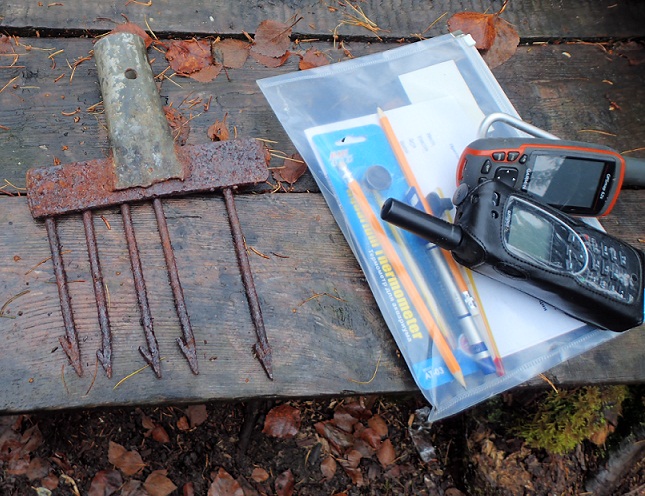
The fishing spear – an illegal equipment
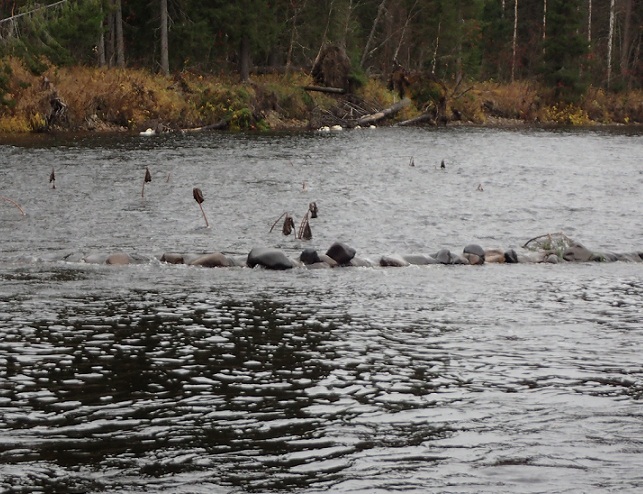
The stone fence
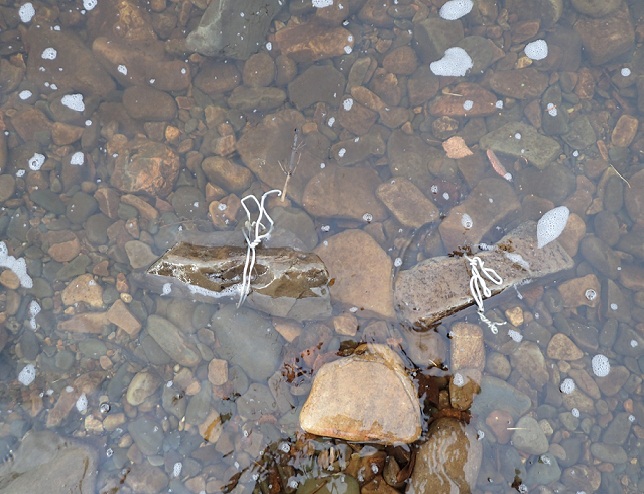
The weight lead for the net fixed above the fence
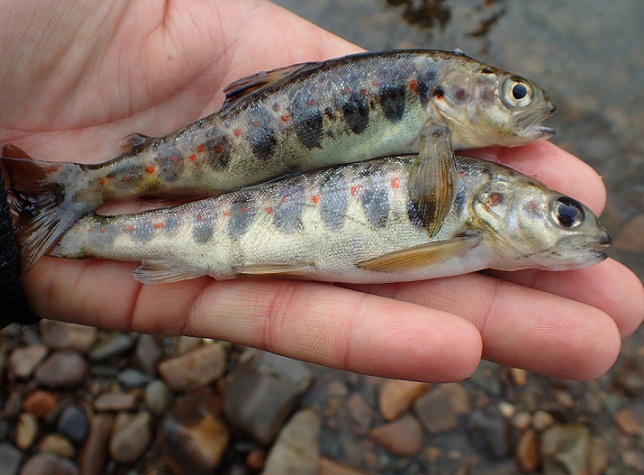
Young salmon left out by the poachers
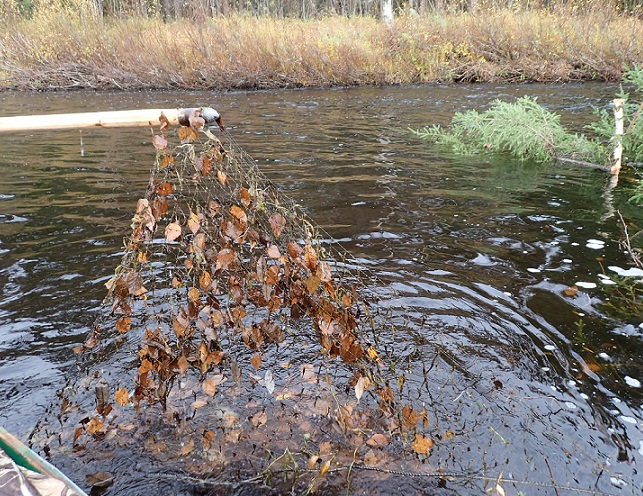
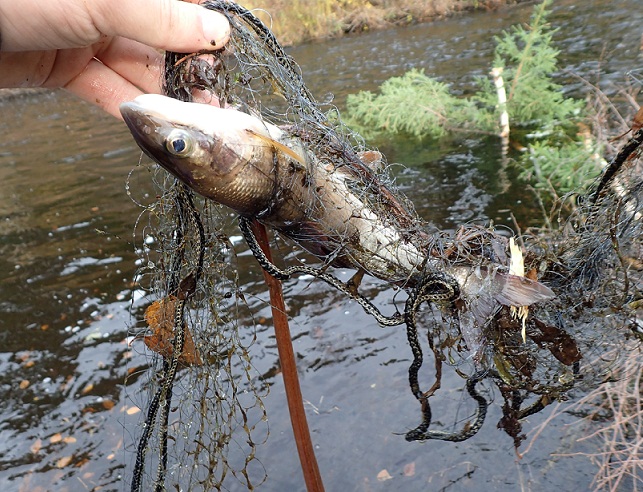
Dead grayling in the fishing net left by the poachers
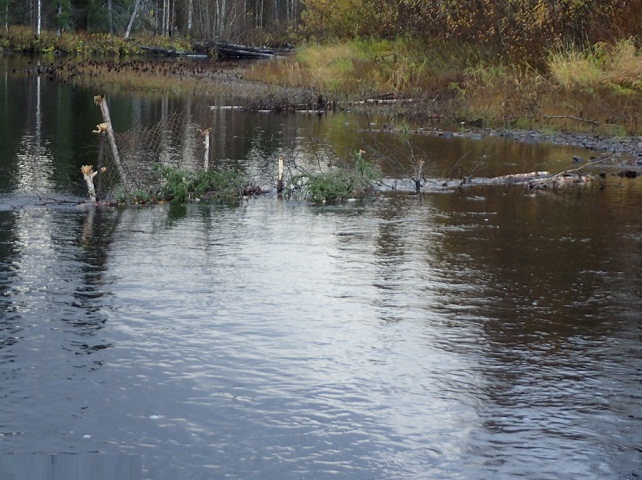
The wooden fence
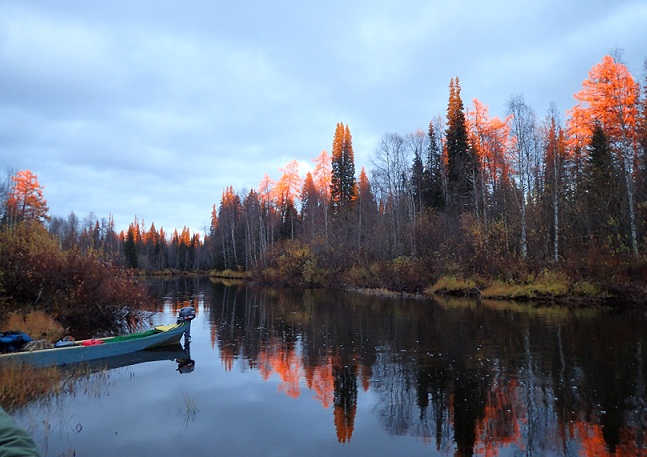
The Mezen River close to the place where the Upper Puzla River flows in it
Photo by Nikolay Shilov









